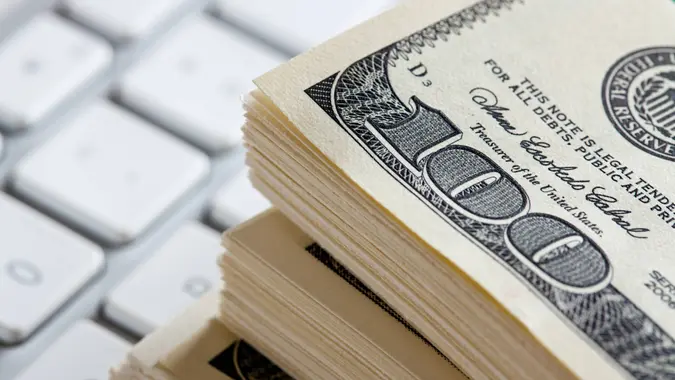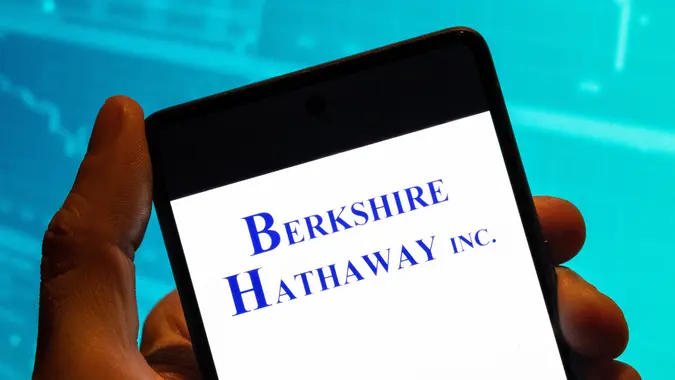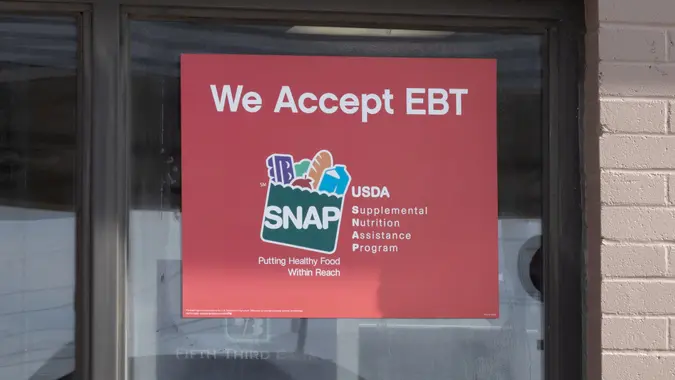Inflation Relief 2023: Over 60% of Americans Are In Favor of More Checks

Commitment to Our Readers
GOBankingRates' editorial team is committed to bringing you unbiased reviews and information. We use data-driven methodologies to evaluate financial products and services - our reviews and ratings are not influenced by advertisers. You can read more about our editorial guidelines and our products and services review methodology.

20 Years
Helping You Live Richer

Reviewed
by Experts

Trusted by
Millions of Readers
When the pandemic’s lockdowns and supply chain interruptions made a nasty dent in the American economy, Congress went to work passing a series of relief plans, including stimulus checks that put money directly back into Americans’ bank accounts. Stimulus checks of (up to) $1,200 to eligible adults went out in April 2020, and a second round of up to $600 came out between December 2020 and January 2021. President Biden then passed the American Rescue Plan, providing yet another $1,400.
While occasional stimulus money won’t solve most people’s economic woes — they tend to make the biggest difference to people with less than $500 in their checking account, U.C. Davis found — they do stimulate the economy.
So, do Americans want more stimulus checks? According to a recent survey conducted by GOBankingRates of 1,028 Americans aged 18 and older, 62% said they are in favor of more stimulus or inflation relief checks in 2023. In comparison, 22% said no and 16% were undecided.
In addition to stimulus checks, 19 states are offering relief in the form of tax refunds for the remainder of 2022. These payments range from $50 (Illinois) to $3,200 (Alaska) but vary from state to state.
Almost a Quarter of Americans Live Paycheck to Paycheck
While it probably doesn’t need explaining why most people said “yes” to more money, when you consider that 24% of Americans are living paycheck to paycheck, according to the same GOBankingRates’ study, you can understand how every little bit helps.
Those most stressed about money were Gen Xers (in the 45-54 age bracket), of whom 28% reported living paycheck to paycheck. But close behind them (25%) were younger millennials, aged 25-34, and adult Gen Zers (24%), aged 18-24.
Why Are 22% Against Inflation Relief Checks?
It’s hard to say specifically why some people would be opposed to free money, but it may have less to do with their personal finances and come instead from a more economical view: that large amounts of cash infused into the economy actually lead to inflation down the line.
Given how high inflation has become of late, perhaps these people feel that they were correct in their concerns. Additionally, stimulus checks tend to benefit low-income people more than any other economic group, so those not in this category may be less concerned with receiving money from the government.
While the worst economic effects of the pandemic may be over, the future remains uncertain. With the Federal Reserve increasing interest rates in an attempt to slow inflation, hard times may still abound, and there’s always the chance for more stimulus in 2023.
 Written by
Written by  Edited by
Edited by 
























